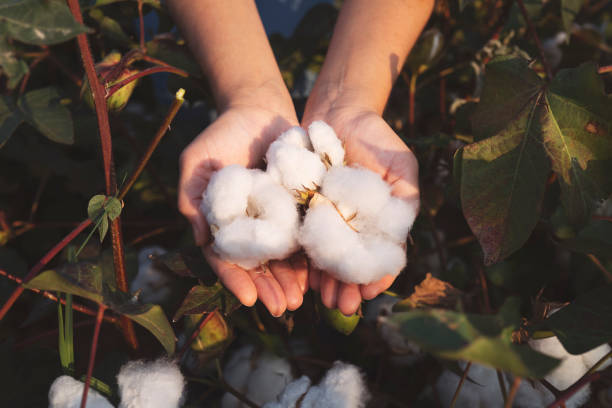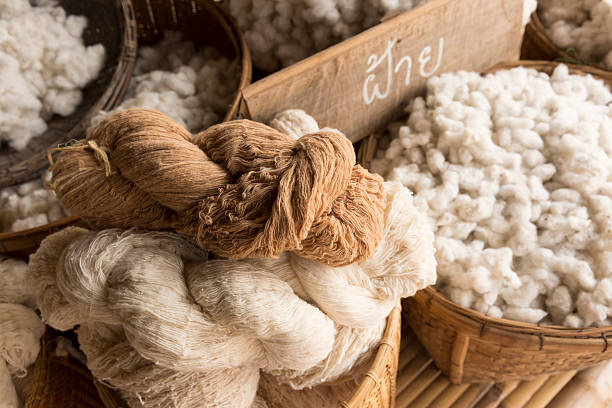The Beauty of Natural Fibers: Sustainable Textiles and Fabrics
This post contains affiliate links. I may earn a commission at no extra cost to you if you make a purchase. Note that I’m not a health or outdoor safety professional, so further research is advised. Your support keeps Outdoors A-Z running—thank you! Read the full disclosure.. Read the full disclosure here.
The textile and fashion industry has been undergoing a transformative shift in recent years, with increasing emphasis on sustainability and eco-friendliness. As consumers become more conscious of the environmental impact of their choices, natural fibers have emerged as a beautiful and sustainable alternative to synthetic fabrics. In this article, we will explore the beauty of natural fibers, their significance in sustainable textiles, and their benefits for both the wearer and the environment.
Table of Contents
Introduction
In today’s world, where climate change and environmental concerns are at the forefront, sustainable practices are gaining momentum across various industries. The textile and fashion industry, known for its resource-intensive production processes, is no exception. Natural fibers, derived from plant and animal sources, offer a compelling solution to create sustainable textiles that are gentle on the planet.
Definition of Natural Fibers
Natural fibers are derived from renewable sources found in nature. They are characterized by their organic origin, as they are harvested from plants or animals. Unlike synthetic fibers, which are chemically manufactured, natural fibers offer unique properties and have a significantly lower environmental footprint.
Importance of Sustainable Textiles
Sustainable textiles play a crucial role in reducing the environmental impact of the fashion industry. By using natural fibers, we can minimize the use of non-renewable resources and reduce pollution associated with synthetic fiber production. Sustainable textiles promote a circular economy, supporting the concept of reuse, recycling, and reducing waste.
Benefits of Natural Fibers

Breathability
One of the key benefits of natural fibers is their breathability. Fabrics made from natural fibers, such as cotton, linen, and hemp, allow air to circulate, keeping the wearer cool and comfortable. This natural ventilation helps regulate body temperature and reduces the risk of skin irritation or allergies.
Durability
Natural fibers are known for their durability and longevity. Fabrics made from natural fibers can withstand regular wear and washing without losing their quality. This durability not only reduces the need for frequent replacements but also contributes to a more sustainable and long-lasting wardrobe.
Biodegradability
Unlike synthetic fabrics, which can take hundreds of years to decompose, natural fibers are biodegradable. When disposed of, natural fiber-based textiles break down naturally and return to the environment, minimizing their impact on landfills and oceans. This biodegradability aligns with the principles of a circular economy and reduces the accumulation of textile waste.
Types of Natural Fibers
There are various types of natural fibers, each with its unique characteristics and applications. Let’s explore some of the most commonly used natural fibers in sustainable textiles:
Cotton

Cotton is one of the most widely used natural fibers. It is soft, breathable, and versatile, making it suitable for a wide range of garments and home textiles. However, conventional cotton farming practices often involve the use of harmful pesticides and excessive water consumption. Organic cotton, on the other hand, is grown without synthetic chemicals, making it a more sustainable choice.
Linen
Linen is derived from the flax plant and has been used for centuries. It is highly breathable, absorbent, and has a distinctive texture. Linen fabrics are ideal for warm climates as they allow air to circulate freely, providing a cooling effect. Linen production requires fewer resources compared to other natural fibers, making it an eco-friendly choice.
Hemp
Hemp is a versatile natural fiber with excellent sustainability credentials. It grows quickly, requires minimal water, and doesn’t need pesticides or herbicides. Hemp fabrics are known for their strength and durability, making them suitable for a wide range of applications, from clothing to home furnishings.
Production of Sustainable Textiles

Creating sustainable textiles involves not only using natural fibers but also adopting eco-friendly production processes. Let’s explore two key aspects of sustainable textile production:
Organic Farming
Organic farming practices prioritize the use of natural fertilizers and pest control methods, avoiding synthetic chemicals. By choosing organic farming for natural fiber cultivation, we can protect soil health, conserve water, and promote biodiversity.
Eco-friendly Processing
The processing of natural fibers plays a crucial role in determining the environmental impact of textiles. Eco-friendly processing techniques aim to minimize water consumption, reduce energy usage, and avoid the use of harmful chemicals. Innovations in textile technology have paved the way for more sustainable processing methods.
Sustainable Fashion Industry
The fashion industry is increasingly recognizing the need for sustainable practices and embracing a more ethical and eco-conscious approach. Let’s delve into two important aspects of the sustainable fashion industry:
Ethical Practices
Sustainable fashion goes beyond environmental considerations and encompasses ethical practices. This includes ensuring fair wages, safe working conditions, and respect for human rights throughout the supply chain. By supporting brands that prioritize ethical practices, consumers can contribute to a more sustainable and socially responsible industry.
Eco-conscious Design
Eco-conscious design focuses on creating garments and accessories with sustainability in mind. It involves using innovative materials, upcycling or repurposing existing fabrics, and designing for longevity. Eco-conscious design encourages consumers to invest in high-quality, timeless pieces rather than fast fashion trends.
Impact on the Environment
The use of natural fibers and sustainable textiles has a positive impact on the environment. By reducing reliance on synthetic fibers, we can reduce carbon emissions, save energy, and minimize the release of harmful chemicals into the environment. Choosing sustainable textiles helps protect ecosystems, conserve resources, and mitigate climate change.
Final Thoughts
In conclusion, the beauty of natural fibers lies not only in their aesthetic appeal but also in their sustainability. Sustainable textiles made from natural fibers offer numerous benefits, including breathability, durability, and biodegradability. By embracing natural fibers and eco-friendly production processes, the fashion industry can contribute to a more sustainable and environmentally conscious future.
FAQs (Frequently Asked Questions)
Are natural fibers more expensive than synthetic ones?
The price of natural fiber-based textiles can vary depending on factors such as production methods, certifications, and brand positioning. While some natural fibers may be slightly more expensive than their synthetic counterparts, it’s important to consider the long-term benefits and environmental impact when making purchasing decisions.
Can sustainable textiles be fashionable?
Absolutely! Sustainable fashion has come a long way in terms of design and aesthetics. Many designers and brands are embracing sustainable practices and creating stylish and on-trend garments using natural fibers and eco-conscious production methods.
Are there any certifications to look for when buying sustainable textiles?
Yes, several certifications indicate the sustainability and ethical standards of textiles, such as Global Organic Textile Standard (GOTS) for organic fibers, Fair Trade for ethical practices, and OEKO-TEX Standard 100 for ensuring textile products are free from harmful substances.
How can consumers contribute to a more sustainable fashion industry?
Consumers can make a difference by choosing sustainable and natural fiber-based textiles, supporting brands that prioritize sustainability, and adopting a mindset of conscious consumption. By extending the life of their clothing through proper care and repair, consumers can reduce waste and contribute to a circular fashion economy.
Where can I find sustainable textiles and fabrics?
Sustainable textiles can be found in various retail outlets, both online and offline. Look for brands that promote their use of natural fibers and sustainable practices. Additionally, local markets, fair-trade stores, and independent designers often offer unique and sustainable options.















